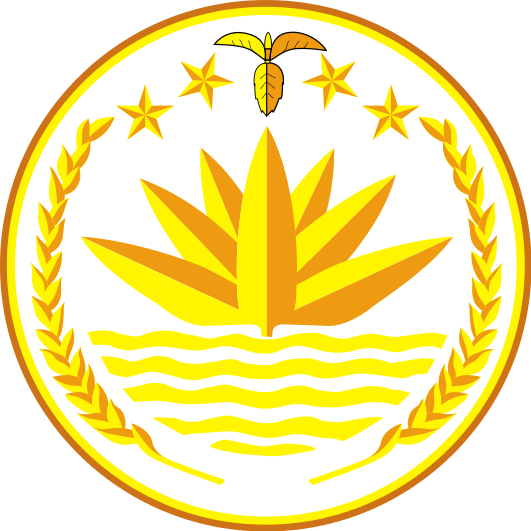

Bangladesh , officially the People's Republic of Bangladesh (গণপ্রজাতন্ত্রী বাংলাদেশ Gaṇaprajātantrī Bāṃlādēśa), is a country in South Asia. It shares land borders with India and Myanmar. Nepal, Bhutan and China are located near Bangladesh but do not share a border with it. The country's maritime territory in the Bay of Bengal is roughly equal to the size of its land area.Bangladesh is the world's eighth most populous country. Dhaka is its capital and largest city, followed by Chittagong which has the country's largest port.
Bangladesh forms the largest and eastern part of the Bengal region.Bangladeshis include people of different ethnic groups and religions. Bengalis, who speak the official Bengali language, make up 98% of the population.The politically dominant Bengali Muslims make the nation the world's third largest Muslim-majority country. Most of Bangladesh is covered by the Bengal delta, the largest delta on Earth. The country has 700 rivers and 8,046 km (5000 miles) of inland waterways. Highlands with evergreen forests are found in the northeastern and southeastern regions of the country. Bangladesh has many islands and a coral reef. It is home to the Sundarbans, the largest mangrove forest in the world. The country's biodiversity includes a vast array of plant and wildlife, including critically endangered Bengal tigers, the national animal.
The Greeks and Romans identified the region as Gangaridai, a powerful kingdom of the historical subcontinent, in the 3rd century BCE. Archaeological research has unearthed several ancient cities in Bangladesh, which had international trade links for millennia.The Bengal Sultanate and Mughal Bengal transformed the region into a cosmopolitan Islamic imperial power between the 14th and 18th centuries. The region was home to many principalities which had inland naval prowess.It was also a notable center of the worldwide muslin and silk trade. As part of British India, the region was influenced by the Bengali renaissance and played an important role in anti colonial movements. The Partition of British India made East Bengal a part of the Dominion of Pakistan; and was renamed as East Pakistan. The region witnessed the Bengali Language Movement in 1952 and the Bangladesh Liberation War in 1971. After independence, a parliamentary republic was established. A presidential government was in place between 1975 and 1990, followed by a return to parliamentary democracy. The country has also been affected by poverty, natural disasters, hunger, dominant party systems and military coups.
